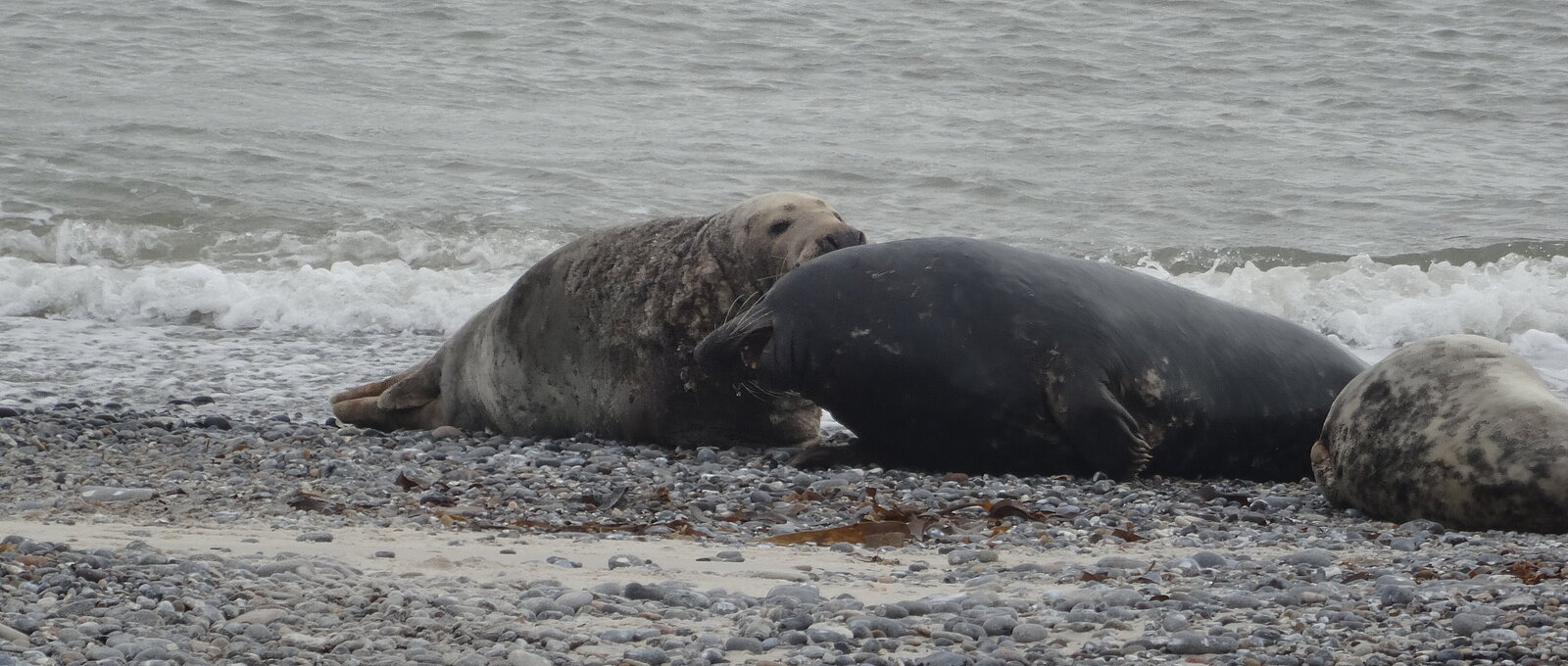
| Project data | |
|---|---|
| Project leader and chief scientist: | Prof. Prof. h. c. Dr. Ursula Siebert |
| Scientific staff: | Dr. Luca Schick, Dr. Stephanie Groß, TÄ Lotte Caecilie Striewe |
| Project term: | February 2023 until June 2026 |
| Sponsorship: | Ministerium für Energiewende, Klimaschutz, Umwelt und Natur |
Project description
Grey seals are increasingly found on both the North Sea and Baltic Sea coasts of Schleswig-Holstein, indicating that the number of animals using these waters is continuing to rise.
The increasing populations also increase the urgency of examining these marine mammals for their health status, as it is suspected that they can play a role in the spread of infectious diseases of harbor seals such as distemper, particularly due to their extended migratory behavior. In addition, individual animals with severe disease processes are repeatedly recorded in the Baltic Sea. In both waters, it is particularly important to examine the animals for their health status as carriers of zoonotic diseases, especially as people have been infected with these pathogens through contact with carcasses in the past. Furthermore, potential anthropogenic influences on disease incidence must be investigated in order to protect the seal populations.
With increasing populations, attacks by gray seals on other grey seals, harbor seals and harbor porpoises are also on the rise. This can occur through predation, but also through sexual intercourse with harbor seals as well as juvenile grey seals of both sexes. Negative population effects are possible as well as effects on the health of the marine mammal-eating grey seals, as they hunt at a higher trophic level than their conspecifics, comparable to polar bears or orcas. Initial cases of influenza in both harbor seals and grey seals have shown that seals are susceptible to this virus and need to be studied closely both as a reservoir and as a "spillover" of this potential zoonosis. In addition, anthropogenic activities in the habitat of grey seals continue to increase, which can have various influences not only on the health status but also on the habitat use of the animals.
The aim of this research project is to investigate the health status and causes of death of grey seals that died in the waters of Schleswig-Holstein. The aim is to examine whether the parasitic, viral and microbial load of grey seals, in particular zoonotic pathogens, is changing. For this purpose, the grey seals, which will be recovered in the years 2023 to 2026 and brought to the ITAW for examination, will be completely dissected. Histological, parasitological, virological and microbiological examinations will be carried out. In addition, a comparison will be made with the results from previous years in order to assess the development of the health status.
The development of grey seal populations in the North Sea and Baltic Sea will also be researched and evaluated. As grey seals are highly mobile marine mammals, data will be exchanged with neighboring countries. The Trilateral Wadden Sea Secretariat (CWSS) and the Trilateral Marine Mammal Expert Group (EGMama), as well as HELCOM's Marine Mammal Health Group for the Baltic Sea region and OSPAR's Marine Mammal Working Group in the North Sea, play a special role here. The results of the investigations are urgently needed for the work on the Marine Protection Framework Directive and the aforementioned agreements.
Contact person
Stiftung Tierärztliche Hochschule Hannover
Institute for Terrestrial and Aquatic Wildlife Research
Werftstr. 6
25761 Büsum
Dr. Luca Schick
Phone: +49 (0)511-8568174
e-mail schreiben


